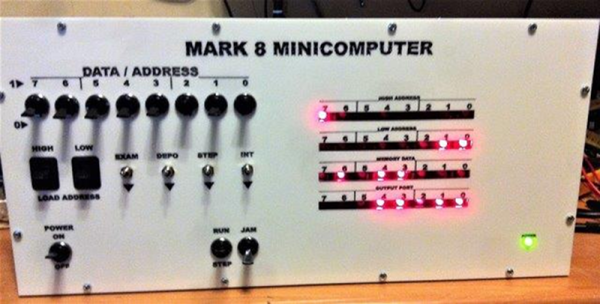There are a handful of computers that have become true museum pieces. The Altair, of course, is tucked away in the Smithsonian’s warehouse waiting for some time in the future when Apple’s legacy fades or until there’s a remake of War Games. Likewise, the French Micral and American SCELBI are important historical artifacts, and even a modern component-accurate reproduction of an Apple I could fetch a decent amount of cash at the right auction.
There’s something special about these old kit computers – even though the instructions for these machines provided volumes of documentation, no one is building these machines anymore. You just can’t buy the PCBs, and sourcing period-correct components is hard. [Brad] is an exception. He found original, untouched PCBs for the cover story of the July, 1974 edition of Radio-Electronics. It’s an unbuilt Mark-8 minicomputer. Now [Brad] is in a position no one else has been in since the 1970s: he can build a vintage minicomputer, with a TV Typewriter, from scratch. He’s documenting the whole thing.
Since this is the first opportunity this century anyone has had to build a truly retro minicomputer, [Brad] is going all-in with this project. For an interface, he’s building [Don Lancaster]’s TV Typewriter, a device introduced in the September 1973 issue Radio-Electronics. When combined with an old CRT TV, the TV Typewriter becomes a serial terminal. While today something like this could be built around a single microcontroller, constructing the TV Typewriter is no small feat: it’s spread across four boards, uses character generator ROMs, and is currently housed in a beautiful red oak case.
Just because [Brad] is building an ancient computer using ancient parts doesn’t mean he can’t get a little help from modern technology. He’s applying white silk screen to his custom TV Typewriter boards using the toner transfer process. Yes, apparently you can get toner cartridges filled with white (and neon!) toner, and this works well enough to replicate the look of professionally silk screened boards.
This is one of the greatest retrocomputing projects we’ve seen in a very long time. This is a true retrocomputer, complete with custom transformers and gigantic linear power supplies. When this project is complete, [Brad] will have a museum piece, all thanks to a lucky find of an eBay auction and a lot of hard work.













